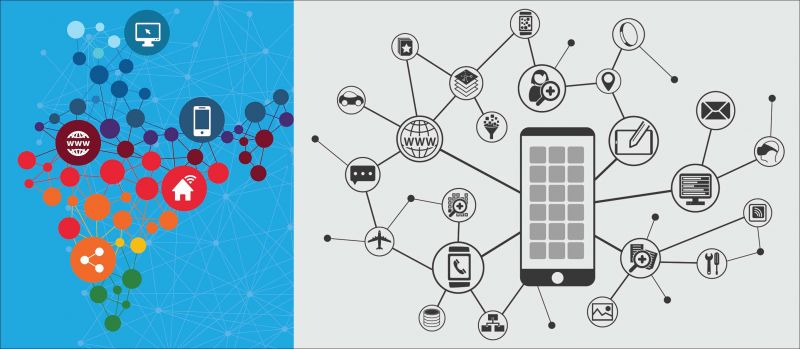Network of the future is here
Networks used to be dull bits of hardware, moving data from here to there.

Consider these numbers: India is now the world's leader in consuming data on mobile phones — 1.5 billion GB per month. And we like to watch movies on our handsets: Over 60% of all Internet traffic here consists of video....in 3 years we'll be consuming some 84 billion video-minutes per month.
Last year we were thrilled if a service provider let us use up 1GB in a month. Today we demand — and get — 1GB/day.
No wonder Indian data networks are grappling with some of the densest traffic in the world. And no wonder, the hotbed for the world's top tech companies to launch their futuristic technologies is right here in India, and that is Bharat.
Just a year after it announced the creation of "Network of the Future", Cisco a global networking giant, is seeing the widest, fastest adaptation of the new technology, in India. It's called Intent-based networking; that is, the network doesn't wait to be told what you want it to do. It second guesses — and gets on with the job. Like that movie title, it's all about the 'Need for Speed'.

How does this touch you and me?
It enabled HDFC bank to offer the "10 second loan": Make your application on line and the system assesses your need, your payment capacity, and credit history— and comes to a decision in that many seconds.
It enabled the six campuses of NMIMS University to implement mobile phone selfie-based auto attendance for every class, saving a precious 10% of teaching time.
It helped India's biggest logistics player, SafeExpress to shift 80 million packages a day with 99% accuracy — and Bangalore-based Narayana Health to offer remote consultations in thousands of rural locations, country-wide
And an all-data network like Reliance Jio, uses local caches of video content with a Content Delivery Network (CDN) so that movie clips play without stutter even in a Rs 4,000 feature phone.
Indian tech biggies are in the vanguard: Wipro is the first organisation to implement Intent-based networking anywhere in the world and TCS is rolling out its largest implementation.
Networks used to be dull bits of hardware, moving data from here to there. But the new intent-savvy network has pushed these wires to ask, not just 'where to', but 'why' and 'what'. The carriers have become clever and networking has morphed from so-boring to sexy.
And it is all happening right here: "India is shaking mass scale networks and reinventing it for the world", said Sanjay Kaul, Cisco's Managing Director for global service providers, last week, speaking at the company's annual tech summit in Goa.
And in a larger context, Cisco President for IT, V. C. Gopalratnam admitted: "We're falling in love with the network — all over again!"
Jargon jungle

The new networking era is throwing up some bizarre new buzzwords. Here a cheat sheet to the new jargon that was bandied about by analysts and Cisco honchos in Goa last week. Cram up for that next job interview!
Context-aware computing: A class of (mostly) mobile systems that can sense their physical environment and behave accordingly: for example, a tablet computer switching the screen from portrait to landscape, with the user’s current orientation or switching on the back-light of the phone when used in the dark.
Chaos monkey: Intentionally disabling computers to test how remaining systems respond to the outage. Chaos Monkey is now part of a larger suite of tools called the Simian Army designed to simulate and test responses to various system failures. It was first used by Netflix in 2011.
Artificial stupidity: It is a derogatory reference to the inability of an Artificial Intelligence program to adequately perform basic tasks. Alternately it refers to a technique of deliberately dumbing down computer programmes in order to introduce errors in their responses.
Dynamic tiering: The old hierarchical power structures in many tech companies are giving way to a number of collaborative groups, interacting with each other — ie you now work for multiple bosses, and even these may change all the time!
Identity commerce: Blame this on the increasing availability of tools like Aadhaar! Adding ID verification to e-commerce sites helps to protect them against fraudulent transactions. (IndiaTechOnline)
—IndiaTechOnline

